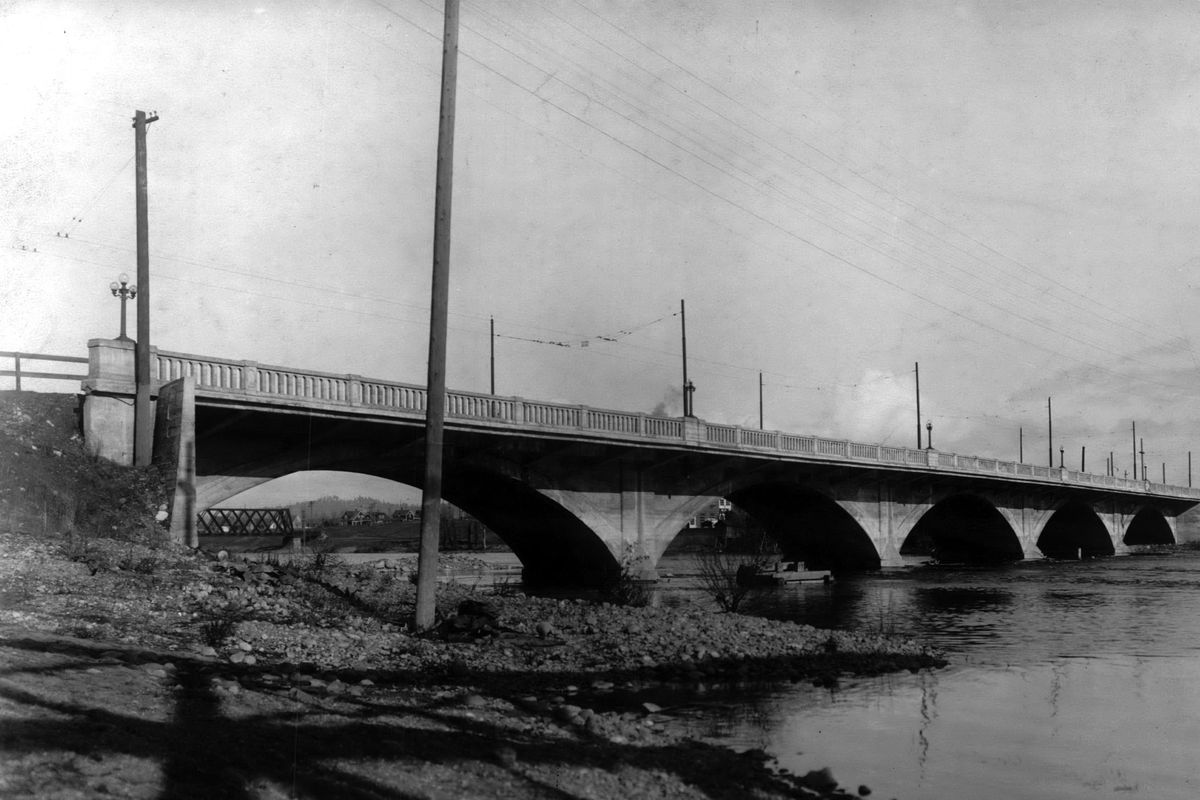Then and Now: East Trent Bridge – about to be replaced – once set the standard for bridges in Spokane

It was 1907 and the Spokane Streets and Public Works Departments held a “smoker” at the Hutton Building. The men-only gathering, complete with cigars, brought together engineers to hash out how to deal with the city’s “flimsy bridges.”
City Engineer Charles McIntyre spoke first, asserting that old bridges are “menacing the lives of thousands who have to cross them everyday.”
He said that Howard Street, Washington Street, Division Street, Olive Avenue and Hamilton Street needed bridges to cross rivers or railroad corridors.
At the same meeting, engineer J.C. Ralston responded to McIntyre’s list with a plea for modern, aesthetically pleasing bridges, specifically concrete bridges.
Though still experiencing explosive growth, the city struggled to pave roads, run utilities and build infrastructure.
Early wooden bridges had been slowly upgraded to steel structures, but steel quality and design still were evolving. Heavy streetcars tested the integrity of steel bridges. Riders would swear that the steel 1892 Monroe Street Bridge would shudder and vibrate as the cars crossed the 120-foot-deep gorge.
The first East Olive Bridge, known today as the East Trent Bridge, was a wooden structure resting on wooden pilings. Main timbers had warped, twisting it out of alignment, and users were warned to cross it only at walking speed. Based on an initial estimate of $40,000, the city approved a new steel bridge in 1908. But construction bids were well over $100,000 and steel mills couldn’t meet the construction schedule. The city built the new concrete bridge with city laborers and completed it in 1910, though the cost exceeded $100,000. It spans more than 500 feet with a 40-foot wide roadway, plus sidewalks.
The deteriorated East Trent Bridge is now scheduled for replacement. Work could begin in the spring of this year.
Cost overruns on the East Olive Bridge made everyone uneasy, especially because the city was preparing to build a new Monroe Street Bridge, which was estimated to cost $700,000. But the aesthetic qualities of formed concrete became the standard.
According to the book “Bridges of Spokane” by Jeff Creighton, 12 new concrete bridges were built in the city between 1907 and 1917.
Among those, the steel Monroe Street Bridge was replaced in 1911. The steel Division Street Bridge was replaced with concrete after a deadly collapse in 1915.